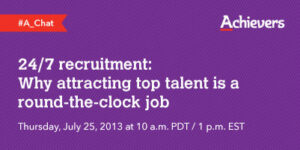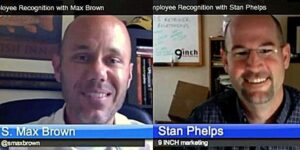
Managing Your Talent and Business Alignment
Good business leaders recognize the value in a good hire, but often times don’t appreciate that one key individual can add to or deter from

Good business leaders recognize the value in a good hire, but often times don’t appreciate that one key individual can add to or deter from
High employee turnover hurts the business bottom line. It’s estimated that the average cost of a lost employee is 38 percent of the employee’s annual salary. Considering
Love is a mystery, as is hiring. The former: we can talk about that complexity some other time. The latter: at least, given the rise
When we talk about addressing the challenges of balancing work and family, the conversation is often framed as a women’s issue. In response, we’ve seen
Almost every organization has a firm understanding of how important diversity is. There is an abundance of research out there that confirms more diversity results
The topic of entrepreneurship fascinates me. I often wonder what makes one person seek out entrepreneurial opportunities while others are content to be employees. I
How does effective onboarding relate to retention, engagement and customer satisfaction? Simply put, in every way. Onboarding is a widely misunderstood practice. Some companies believe
The new normal in terms of the workforce is not just multi-generational or global. It’s multi-everything. Working alongside each other are permanent payroll employees and
Richard Branson lives large on social media, weaving stories about a life lived on the edge in <140 characters. Jack Dorsey tweets of past presidents,
“Hold your fire — Keep it burning bright Hold the flame ’til the dream ignites — A spirit with a vision Is a dream with
The TalentCulture #TChat Show is back live on Wednesday, March 4, 2015, from 7-8 pm ET (4-5 pm PT). The #TChat radio portion runs the first
“We play the game With the bravery of being out of range We zap and maim With the bravery of being out of range…” —Roger
June 30, 2009 “They call them Walkers.” Rick the recruiter whispered the words like a desperate prayer while he stood at the 10th floor window looking
Most people don’t associate HR with innovation. They’d associate HR with the things that traditionally we have been good at — rules, policies, administration. And
“A tired mind become a shape-shifter Everybody need a mood lifter Everybody need reverse polarity Everybody got mixed feelings About the function and the form

Talent management and employee engagement have become key buzz phrases in business. Each has taken human asset management to a more specific, more integrated level.

What’s ahead in talent management for 2014? Exciting times for social media and employer brand strategy!

Business leaders who truly want to engage employees look beyond the obvious. Meghan M. Biro outlines 5 core questions companies should answer

Does talent acquisition seem like a vicious cycle at your company? For sustainable results, try an approach that integrates 3 elements

What does it take to attract top talent in today’s world of work? Save the date for a special webinar with experts from Achievers and TalentCulture!

It’s no secret that workforce recognition pays. The trick is getting recognition right. How can employers make it count? That’s the focus in the TalentCulture community at this week’s events…
This week in the TalentCulture community, we’re going to examine employee engagement— the lack of it, the skills needed for it, the mindful state required to understand the very notion of it. It’s controversial, but it begs our attention…
In today’s increasingly informal work environment, what’s the most appropriate want to bring new hires and contractors into the fold? How can you make a lasting first impression, and support new hires throughout their indoctrination?
It’s no secret that organizational cultures have been hurting in recent years. But how can we expect culture to flourish on diminishing investment in the “human” side of business? And how long can HR wave its magic wand until business leaders reinforce culture at its foundations? #TChat sparked some serious questions…
I’d like to talk about several pet theories about employer/employee relationships. First, employees work to make money. Second, it’s Maslow’s world, and we just live in it. So what does this mean for the world of work? Let’s look closer…